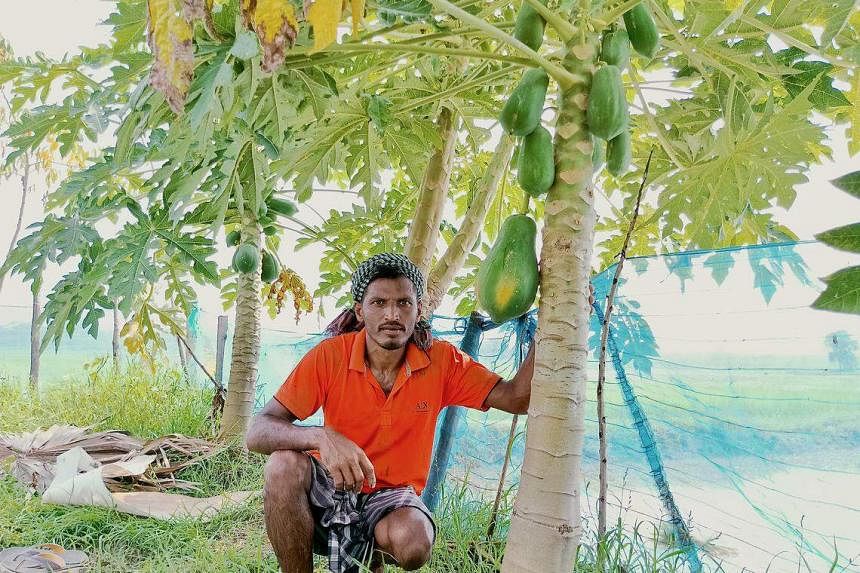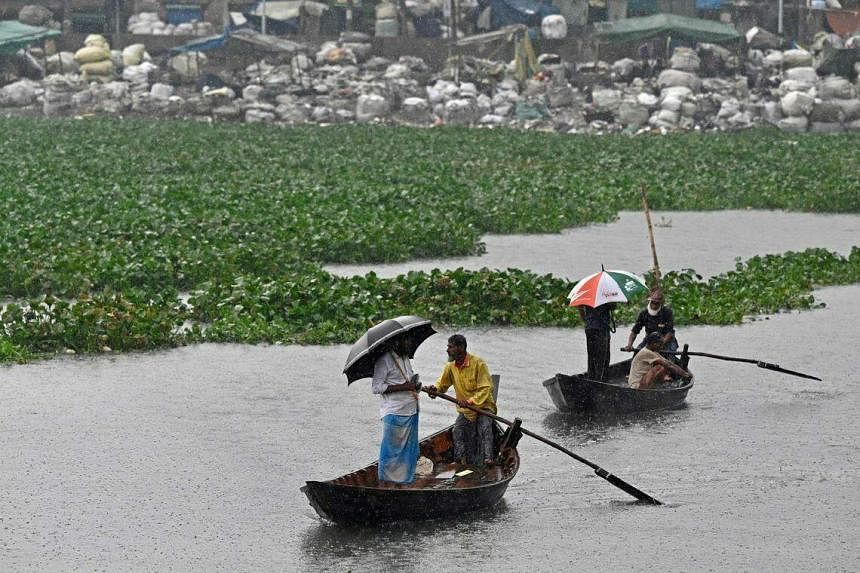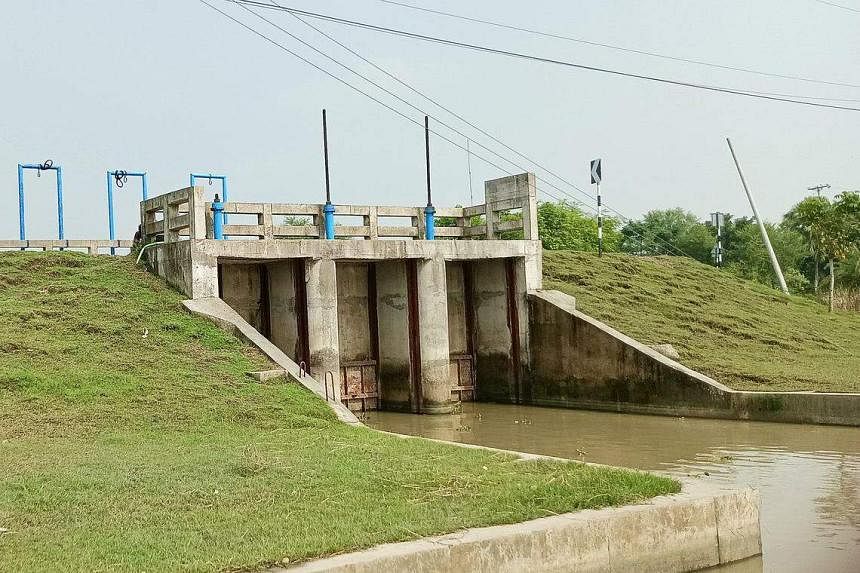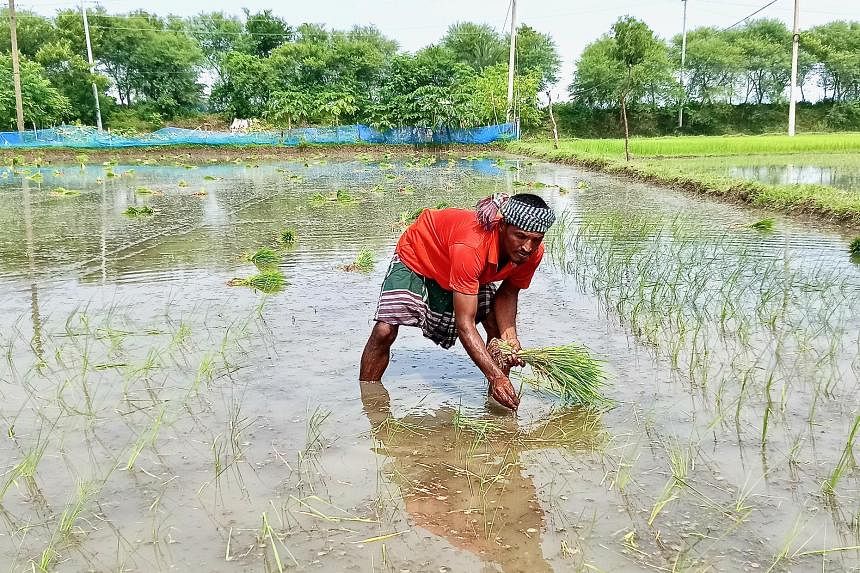DHAKA - Life in Bangladesh’s coastal communities has long followed the rhythms of the Bay of Bengal’s tides. But now, the tides are telling a different story – one of growing uncertainty and vulnerability in the face of climate change.
It is also a story of resilience in the people’s struggle to adapt to climate change and survive the disasters that it brings.
Like millions of people across Bangladesh, Mr Forhad Islam, 35, relies on agriculture to feed his family. But when he took charge of the family farm more than a decade ago, he struggled to grow crops because of the intrusion of salt water.
“Our ancestors used to say that the land was our lifeline, but at some point, I felt like it was betraying us,” said Mr Islam with a sigh.
He lives in the village of Katianangla in south-west Bangladesh, about 100km from the sea and near the river Pasur, a distributary of the Ganges.
Salinity is one of the natural characteristics in the rivers and groundwater in the coastal belt of Bangladesh. But as global warming leads to rising sea levels in this low-lying country, the salty seawater is moving farther inland. During high tides, ocean salt water enters rivers, and the groundwater has been getting saltier.
Because of this, the farmers in his village rely on rainwater. But rain is becoming rarer. “Fresh water is scarce here, especially in winter and spring,” said Mr Islam. “Fortunately, it’s been raining well this year for the last few days. It’s a good sign for farmers like us. However, we also have to watch out for too much rain too, because flooding will not be ideal.”
Mr Islam primarily grows rice. But with help from government and international non-governmental organisations, farmers like him are also growing produce that is tolerant to soil salinity, such as watermelons, eggplants, carrots, cabbage and coriander.
Apart from causing sea levels to rise, climate change is disrupting Bangladesh’s rainfall patterns, leading to both unusual droughts and severe flooding. The once-predictable cycles of wet and dry seasons have become erratic, leaving communities vulnerable to devastating extremes.

Ground zero
Bangladesh is often referred to as “ground zero for climate change” because of its many vulnerabilities. It ranked seventh on the Long-Term Climate Risk Index of countries most affected by climate change from 2000 to 2019, according to the 2021 Global Climate Risk Index report.
Its vulnerability to climate change is rooted in its combination of geographical, demographic and socio-economic factors.
The country’s low-lying deltaic terrain – with 75 per cent of its land below sea level – and coastal location expose it to rising sea levels and cyclones. These challenges are exacerbated by inadequate infrastructure, poverty, high population density and lack of access to education, which amplify the nation’s susceptibility to the impacts of a changing climate.
However, through innovation that blends traditional wisdom with modern technology, this South Asian nation of 170 million people is building resilience to the vagaries of climate change.
Combining low-tech community practices with high-tech innovations, the government and the people have devised strategies to fortify themselves against rising sea levels and more potent cyclones.
Bangladeshi farmers have brought back and updated traditional practices such as raised homesteads and floating vegetable gardens that help their families and farms stay afloat amid floods.
Sophisticated early warning systems and weather forecasting tools, combined with the old-fashioned word-of-mouth spreading of warnings to villagers without mobile phones, offer crucial lead time for people to prepare for disasters.
Being more resilient has also involved updating and strengthening some of the country’s 139 polders or artificial islands below sea level that are reclaimed and made usable by building embankments, drainage canals and pumping stations.

The polders have existed in Bangladesh since the 1960s and they have protected the coastal community from flooding and tidal waves for years, said Mr Krishna Pod Das, a local engineer of the Bangladesh Water Development Board.
But over time, as climate change forced the sea level to rise, coupled with other factors like gradual erosion over time due to lack of maintenance, the old mechanism of the polders became ineffective, he said.
In 2013, the board, together with the Department of Agricultural Extension, implemented a project to strengthen, rehabilitate and improve the main water infrastructure of 22 coastal polders with funding from the Netherlands.
Putting in new sluices and drainage systems and repairing old ones have ensured that water is efficiently managed. “We can now control when to let the water in or out. We can regulate the intrusion of salt water; we can also expel excess water to prevent flooding and unnecessary water clogging,” said Mr Das.

Re-strengthened polders proved to be a lifeline for farmers like Mr Islam, as they reduce salt-water intrusion significantly and expel water when it rains too much, to prevent crop damage.
Professor Saleemul Huq, director of the International Centre for Climate Change and Development, a research institute based in Dhaka, said the country has made remarkable progress in adaptation. “It’s a learning-by-doing process. Experts from Harvard cannot come and tell our farmers what to do, our farmers will tell us what to do,” he said.
While these tweaks have succeeded in safeguarding lives and property, the fact remains that as global warming worsens, vulnerable nations will face ever more disasters and their poorest people will bear the fullest impact of these catastrophes.
“People living in the worst places in the worst conditions will always get hit first. That is true within a country and also true globally. So poor people are the most vulnerable to climate change and they bear the biggest brunt of it,” Prof Huq said.
For all the country’s efforts, estimates suggest that by 2050, one in every seven people in Bangladesh will be displaced by climate change, and up to 20 million people may have to move because of sea-level rise.
The battle to build a safety net for its people is not one that Bangladesh can fight alone. International institutions like the United Nations and World Bank play a pivotal role, said Prof Huq.
Referring to the annual UN climate summit, the Conference of Parties (COP), Prof Huq said a breakthrough was achieved at the 2022 meeting in Egypt when the Loss and Damage Fund was set up. Its aim was to enable vulnerable countries to respond to and recover from climate impacts.
As it looks to international assistance, Bangladesh is also sharing its experience in combating climate change.
For the last 50 years, the World Bank has supported Bangladesh to build climate resilience and improve disaster risk management, noted Ms Dandan Chen, a representative of the World Bank, in a report in 2022 highlighting the country’s journey to reducing vulnerability to climate change.
“Today, the country shares valuable experience in improving disaster preparedness and climate resilience and is an inspiration for other climate-vulnerable nations,” she added.
- Redwan Ahmed is a freelance journalist based in Bangladesh. His work focuses on human rights violations and climate change, among other things.
- OCBC is the presenting sponsor for the Asia Future Summit 2023. The event is also supported by Guocoland and Kingsford Group.



